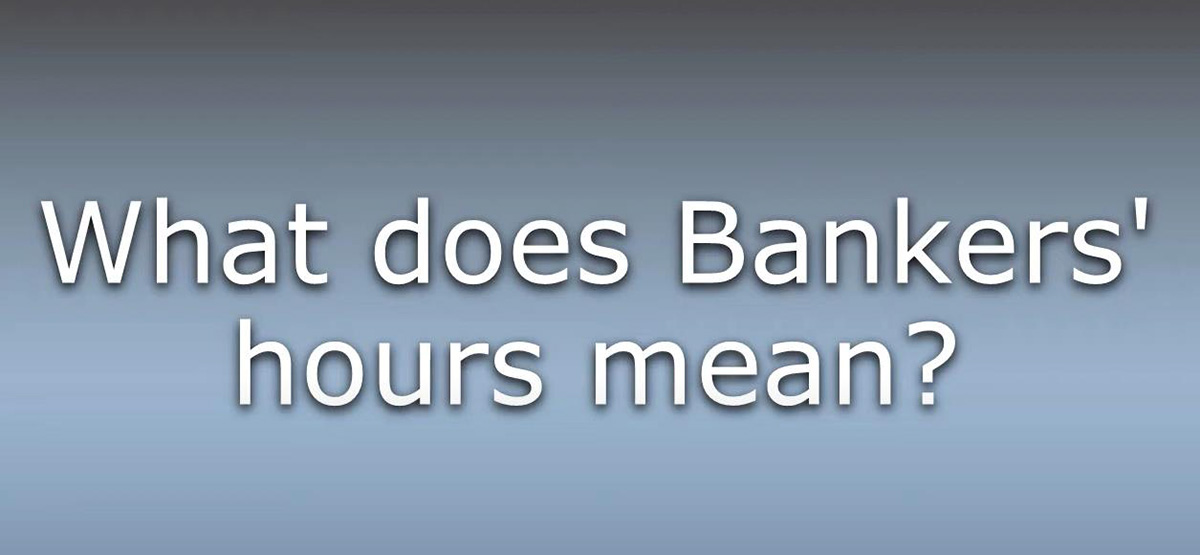

Finance
Which Bank Has A 24-Hour Grace Period?
Published: February 20, 2024
Find out which bank offers a 24-hour grace period for your finances. Get peace of mind with this convenient banking feature.
(Many of the links in this article redirect to a specific reviewed product. Your purchase of these products through affiliate links helps to generate commission for LiveWell, at no extra cost. Learn more)
Table of Contents
Introduction
In the fast-paced world of personal finance, unexpected circumstances can sometimes lead to missed bill payments. Whether it's due to a hectic schedule, an oversight, or a temporary financial setback, finding yourself in this situation can be stressful. However, many banks offer a valuable feature known as a 24-hour grace period, which can provide a brief reprieve for those who miss the payment deadline by a day. Understanding this benefit and knowing which banks offer it can be advantageous for anyone seeking a bit of flexibility in managing their finances. This article will delve into the concept of a 24-hour grace period, explore the reasons behind its availability, identify the banks that offer this service, and provide insights on how to make the most of this opportunity. Whether you're a seasoned financial guru or someone who's just starting to navigate the complexities of personal banking, this guide will equip you with the knowledge needed to leverage a 24-hour grace period to your advantage. So, let's dive in and explore this valuable aspect of modern banking!
What is a 24-hour grace period?
A 24-hour grace period is a brief extension of time granted by some banks for making a payment without incurring a late fee or penalty. This means that if a customer misses the payment deadline by a day, they will not be immediately penalized. Instead, they have an additional 24 hours to submit the required payment without facing the usual consequences. It’s important to note that this grace period typically applies to certain types of transactions, such as credit card payments or loan installments, and may not be universally offered for all financial obligations.
During this 24-hour window, the late payment is not reported to credit bureaus, and the customer’s credit score remains unaffected. Essentially, it serves as a safety net for individuals who may have overlooked a payment deadline due to unforeseen circumstances or simple human error. While the grace period provides a temporary reprieve from penalties, it’s crucial for customers to understand the specific terms and conditions associated with this benefit, as they can vary between different banks and financial institutions.
Overall, a 24-hour grace period offers a small but valuable buffer for individuals to rectify a missed payment without facing immediate financial repercussions. Understanding the nuances of this feature and knowing when it applies can empower consumers to navigate their financial responsibilities more effectively.
Why do banks offer 24-hour grace periods?
Banks offer 24-hour grace periods as a customer-centric approach to managing late payments. This feature reflects an understanding of the challenges that individuals may encounter when juggling multiple financial responsibilities and the occasional oversight that can result in missed deadlines. By providing a brief extension for making payments, banks demonstrate a commitment to supporting their customers during unexpected situations, such as last-minute financial constraints or scheduling conflicts.
Furthermore, offering a 24-hour grace period aligns with banks’ efforts to foster positive relationships with their clients. It acknowledges that even the most organized individuals can encounter occasional slip-ups and aims to mitigate the immediate consequences of such occurrences. This approach can contribute to customer satisfaction and loyalty, as individuals appreciate the flexibility and understanding extended to them during challenging moments.
From a strategic standpoint, the provision of a 24-hour grace period can also benefit banks by potentially reducing the number of customer inquiries and complaints related to late fees. By allowing a brief window for rectifying missed payments, banks can mitigate the need for customers to engage in lengthy discussions or disputes regarding penalties, ultimately streamlining their customer service processes.
Overall, the offering of 24-hour grace periods reflects a customer-centric philosophy and a recognition of the occasional challenges individuals face in managing their financial obligations. By providing this feature, banks aim to support their customers during temporary setbacks and maintain positive relationships while streamlining their operational processes.
Which Banks Offer a 24-Hour Grace Period?
Several major banks and financial institutions recognize the value of providing a 24-hour grace period to their customers. While the specific terms and availability of this feature may vary, the following banks are known for offering this valuable benefit:
- Bank of America: Bank of America is renowned for offering a 24-hour grace period on credit card payments. This allows customers a brief window to submit their payments without incurring late fees or penalties.
- Chase: Chase is another prominent financial institution that provides a 24-hour grace period for credit card payments. Customers can take advantage of this extension to rectify missed deadlines without immediate repercussions.
- Citibank: Citibank offers a 24-hour grace period on credit card payments, providing customers with a short buffer to address missed payment due dates.
- Wells Fargo: Wells Fargo is known to offer a 24-hour grace period on credit card payments, allowing customers a brief reprieve from late fees if they miss the payment deadline by a day.
It’s important to note that the availability of a 24-hour grace period may be subject to specific terms and conditions outlined by each bank. Customers are advised to review their account agreements or contact their respective banks to confirm the details of this feature and understand how it applies to their individual financial circumstances.
While the aforementioned banks are recognized for offering a 24-hour grace period, it’s advisable for individuals to stay informed about any updates or changes to this benefit, as banking policies and offerings may evolve over time.
How to Take Advantage of a 24-Hour Grace Period
Understanding how to effectively utilize a 24-hour grace period can empower individuals to manage their financial obligations with greater flexibility. Here are some key steps to make the most of this valuable benefit:
- Stay Informed: Keep yourself informed about the specific terms and conditions of the 24-hour grace period offered by your bank. Familiarize yourself with the types of transactions eligible for this extension and any associated requirements.
- Set Reminders: Utilize calendar alerts, mobile apps, or other reminders to stay on top of payment due dates. Setting proactive reminders can help reduce the likelihood of missing deadlines and needing to rely on the grace period.
- Act Promptly: In the event that you realize a payment has been missed, take immediate action to submit the required payment within the 24-hour grace period. Procrastination can reduce the effectiveness of this benefit.
- Communicate with the Bank: If unforeseen circumstances have led to a missed payment, consider reaching out to your bank to explain the situation. While the 24-hour grace period provides a buffer, open communication with the bank can demonstrate your commitment to fulfilling your financial responsibilities.
- Review Account Agreements: Periodically review your account agreements and stay updated on any changes to the 24-hour grace period policy. Banks may occasionally update their terms, and staying informed can help you maximize the benefits available to you.
By following these steps, individuals can navigate the 24-hour grace period effectively and leverage it as a valuable tool for managing their financial commitments. Proactive awareness, timely action, and clear communication with the bank can contribute to a smoother and more informed utilization of this beneficial feature.
Conclusion
In the realm of personal finance, the availability of a 24-hour grace period offers a valuable safety net for individuals managing their financial responsibilities. This brief extension provides a temporary reprieve for missed payments, allowing customers to rectify oversights without immediate penalties or credit score implications. The provision of this feature by major banks such as Bank of America, Chase, Citibank, and Wells Fargo reflects a customer-centric approach to addressing the occasional challenges individuals face in meeting payment deadlines.
By understanding the nuances of a 24-hour grace period and staying informed about its availability and terms, individuals can navigate their financial obligations with greater flexibility and confidence. Setting proactive reminders, promptly addressing missed payments within the grace period, and maintaining open communication with the bank are key strategies for maximizing the benefits of this feature.
Ultimately, the 24-hour grace period serves as a testament to banks’ commitment to supporting their customers during unforeseen circumstances and fostering positive relationships. It underscores the importance of balancing financial responsibilities with understanding and flexibility, contributing to a more inclusive and supportive banking environment for individuals from all walks of life.
As banking policies and offerings continue to evolve, staying informed and proactive remains essential for individuals seeking to make the most of the 24-hour grace period and other valuable features that enhance their financial well-being.














